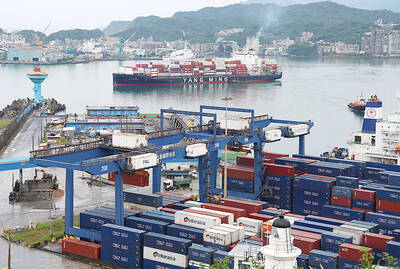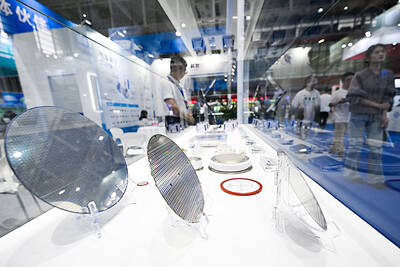Taiwan Land Development Corp (TLDC, 台灣土地開發) yesterday announced it has partnered with WPC Media Services to build a digital data bank aimed at serving media and entertainment companies at a lower cost.
The partnership is the latest move by the local developer to realize the “Huallywood” project, a studio park in Hualien County that is intended to be the nation’s answer to Hollywood.
The cloud-based data bank is the result of months of research aided by Canada-based Cameron Thomson Group, a provider of outsourced business development solutions for the media, entertainment and technology sectors.
The joint venture aims to create an end-to-end ecosystem in Hualien to assist global film and TV producers by facilitating content development, production, distribution and monetization, TLDC chairman Chiu Fu-sheng (邱復生) said.
WCP Media is a Swiss-based entertainment software and services company that manages, markets, and distributes content to business partners and clients.
Business-to-business asset management and logistics of high bandwidth and lower compression media during production and distribution still rely mainly on physical transfers using materials such as hard discs or tapes, WCP vice president Giovanni Contri said in Taipei.
Some processing laboratories have made partial transitions to digital media production and distribution, but the market is highly fragmented, Contri said.
This fragmented approach creates confusion and slows efficiency, while the flow of materials is insecure and requires much higher costs, Contri said.
In addition, piracy risks escalate, adding pressure on how the digital content is stored, handled and transferred, Contri said.
The WCP platform supports feature film and TV series production, as well as finished catalogue distribution, cutting production costs by 20 to 40 percent, Contri said.

Taiwan’s exports soared 56 percent year-on-year to an all-time high of US$64.05 billion last month, propelled by surging global demand for artificial intelligence (AI), high-performance computing and cloud service infrastructure, the Ministry of Finance said yesterday. Department of Statistics Director-General Beatrice Tsai (蔡美娜) called the figure an unexpected upside surprise, citing a wave of technology orders from overseas customers alongside the usual year-end shopping season for technology products. Growth is likely to remain strong this month, she said, projecting a 40 percent to 45 percent expansion on an annual basis. The outperformance could prompt the Directorate-General of Budget, Accounting and

Two Chinese chipmakers are attracting strong retail investor demand, buoyed by industry peer Moore Threads Technology Co’s (摩爾線程) stellar debut. The retail portion of MetaX Integrated Circuits (Shanghai) Co’s (上海沐曦) upcoming initial public offering (IPO) was 2,986 times oversubscribed on Friday, according to a filing. Meanwhile, Beijing Onmicro Electronics Co (北京昂瑞微), which makes radio frequency chips, was 2,899 times oversubscribed on Friday, its filing showed. The bids coincided with Moore Threads’ trading debut, which surged 425 percent on Friday after raising 8 billion yuan (US$1.13 billion) on bets that the company could emerge as a viable local competitor to Nvidia

BARRIERS: Gudeng’s chairman said it was unlikely that the US could replicate Taiwan’s science parks in Arizona, given its strict immigration policies and cultural differences Gudeng Precision Industrial Co (家登), which supplies wafer pods to the world’s major semiconductor firms, yesterday said it is in no rush to set up production in the US due to high costs. The company supplies its customers through a warehouse in Arizona jointly operated by TSS Holdings Ltd (德鑫控股), a joint holding of Gudeng and 17 Taiwanese firms in the semiconductor supply chain, including specialty plastic compounds producer Nytex Composites Co (耐特) and automated material handling system supplier Symtek Automation Asia Co (迅得). While the company has long been exploring the feasibility of setting up production in the US to address

OPTION: Uber said it could provide higher pay for batch trips, if incentives for batching is not removed entirely, as the latter would force it to pass on the costs to consumers Uber Technologies Inc yesterday warned that proposed restrictions on batching orders and minimum wages could prompt a NT$20 delivery fee increase in Taiwan, as lower efficiency would drive up costs. Uber CEO Dara Khosrowshahi made the remarks yesterday during his visit to Taiwan. He is on a multileg trip to the region, which includes stops in South Korea and Japan. His visit coincided the release last month of the Ministry of Labor’s draft bill on the delivery sector, which aims to safeguard delivery workers’ rights and improve their welfare. The ministry set the minimum pay for local food delivery drivers at